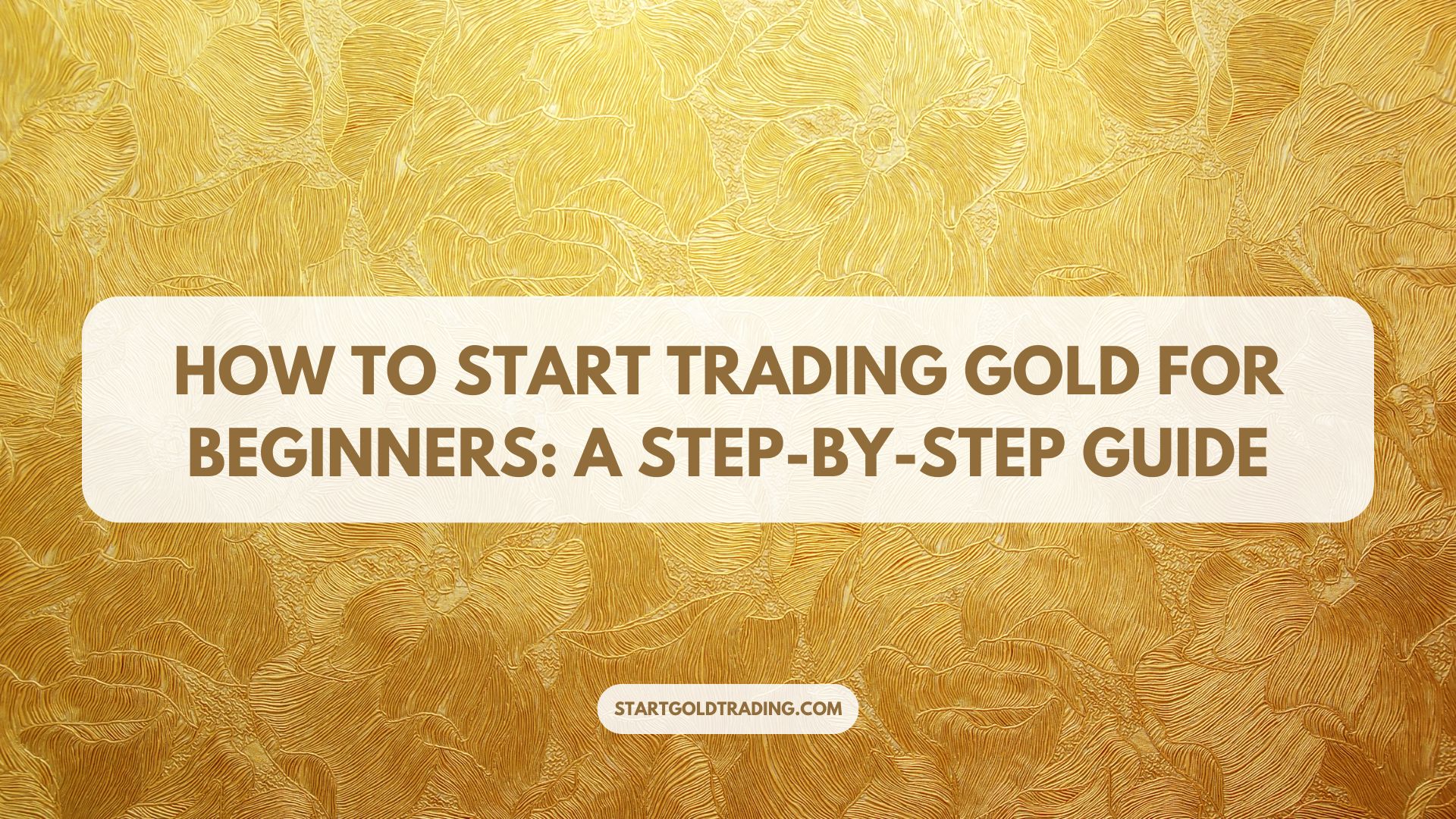Gold has been a valuable asset for centuries, offering traders a unique opportunity to profit from market movements. Whether you’re looking to hedge against inflation, diversify your portfolio, or take advantage of short-term price fluctuations, trading gold can be an excellent strategy.
This guide will walk you through the fundamentals of gold trading, setting up your account, and executing your first trade. Let’s get started!
Step 1: Understanding Gold Market Fundamentals
Before diving into trading, it’s crucial to understand what drives gold prices. Unlike stocks or forex, gold has unique market dynamics influenced by a range of factors.
1. Global Economic Factors
Gold is often considered a safe-haven asset, meaning that when global economies experience uncertainty, investors flock to gold as a store of value. Some key economic indicators affecting gold prices include:
- Inflation: When inflation rises, the value of fiat currencies declines, increasing demand for gold.
- Interest Rates: Higher interest rates make bonds and savings accounts more attractive, reducing gold demand. Lower interest rates, on the other hand, drive gold prices up.
- US Dollar Strength: Gold is priced in USD, so when the dollar weakens, gold prices typically rise, and vice versa.
2. Geopolitical Events
Gold prices often react to major geopolitical events such as wars, trade tensions, and global crises. When uncertainty increases, gold prices tend to rise as investors seek stability.
3. Supply and Demand
Gold supply comes from mining and recycling, while demand is driven by jewelry production, central bank reserves, and investment. Fluctuations in supply and demand can influence gold prices significantly.
Step 2: Setting Up Your Trading Account
To start trading gold, you’ll need to choose a broker and set up a trading account. Here’s how to do it:
1. Choose a Reliable Gold Trading Broker
Selecting the right broker is crucial for your success. Consider the following factors:
✅ Regulation: Ensure your broker is regulated by a reputable authority (e.g., FCA, ASIC, CFTC) for security.
✅ Trading Fees: Look for brokers with competitive spreads and low commissions to keep costs manageable.
✅ Platform and Tools: Choose a broker that offers advanced charting tools, real-time price updates, and mobile trading.
Some popular gold trading platforms include:
- MetaTrader 4 (MT4) / MetaTrader 5 (MT5) – Industry-standard platforms with robust trading tools.
- TradingView – A user-friendly charting platform for technical analysis.
- cTrader – A professional-grade platform with advanced trading options.
2. Open and Fund Your Trading Account
Once you’ve selected a broker, follow these steps:
- Sign up – Provide your details and verify your identity.
- Choose an account type – Some brokers offer standard, micro, or ECN accounts based on your trading style.
- Deposit funds – Use bank transfers, credit/debit cards, or e-wallets to fund your trading account.
3. Decide on Your Trading Method
There are multiple ways to trade gold:
📌 Gold CFDs (Contracts for Difference) – Trade gold without owning it, profiting from price movements.
📌 Gold Futures – Contracts to buy or sell gold at a predetermined price on a future date.
📌 Gold ETFs (Exchange-Traded Funds) – Invest in funds that track gold prices.
📌 Physical Gold Trading – Buying and selling actual gold bars or coins.
For beginners, gold CFDs are often the best option due to their flexibility and lower capital requirements.
Step 3: Executing Your First Trade
Now that you have a funded trading account, it’s time to place your first trade. Here’s how to do it step-by-step:
1. Analyze the Market
Before entering a trade, use technical and fundamental analysis to make an informed decision.
🔹 Technical Analysis – Study price charts, indicators (like RSI, MACD, Bollinger Bands), and trends.
🔹 Fundamental Analysis – Consider economic reports, central bank policies, and market news affecting gold.
2. Choose a Trading Strategy
Some common gold trading strategies include:
✅ Trend Trading: Following long-term price movements.
✅ Breakout Trading: Entering a trade when gold breaks key support or resistance levels.
✅ Scalping: Making multiple small trades throughout the day to capitalize on short-term price fluctuations.
3. Select the Right Order Type
There are several ways to execute a trade:
📍 Market Order – Buy or sell gold at the current market price.
📍 Limit Order – Set a price at which you want to buy or sell gold.
📍 Stop-Loss Order – Automatically close your trade if the price moves against you.
4. Manage Your Risk
Risk management is essential to avoid large losses. Here are some key rules:
⚠️ Never risk more than 1-2% of your capital per trade.
⚠️ Always use stop-loss orders to limit potential losses.
⚠️ Diversify your portfolio to reduce exposure to gold price fluctuations.
5. Monitor and Adjust Your Trade
Once you’ve placed a trade, track it closely. If gold moves in your favor, consider adjusting your stop-loss to lock in profits. If the trade moves against you, exit early to minimize losses.
Final Thoughts: Start Trading Gold with Confidence
Gold trading offers incredible opportunities, but success requires a solid understanding of the market, choosing the right broker, and executing trades with a well-defined strategy. As a beginner, start with small trades, use demo accounts to practice, and continuously improve your skills.
Key Takeaways:
✅ Gold prices are influenced by global economics, politics, and supply-demand dynamics.
✅ Choose a regulated broker with a user-friendly trading platform.
✅ Use technical and fundamental analysis before entering a trade.
✅ Manage risk with stop-loss orders and proper trade sizing.
✅ Start small, refine your strategy, and continuously learn from your trades.
By following these steps, you’ll be on your way to mastering gold trading and making informed investment decisions. Ready to start trading gold? Open a demo account today and put your knowledge to the test! 🚀

